
Born of a charming mix between a Cavalier King Charles Spaniel and a Poodle, the Cavapoo, with its irresistible appeal and friendly disposition, has won hearts worldwide. This breed is a popular choice for families, singles, and seniors, thanks to their adaptable nature and the ability to thrive in various living conditions. Their loyal, affectionate, and playful temperament makes them an ideal companion.
However, it's important to remember that raising a Cavapoo puppy is not always about cuddles and playtime. Behind those adorable eyes and fluffy coat, there lies a bundle of energy that is known for a few challenging behaviors. Like any other breed, Cavapoos too come with their set of quirks. These Cavapoo puppy behaviors, if left unchecked, can escalate into serious issues, undermining the joy of pet ownership.
 Right from excessive barking to chewing on your favorite household items, ignoring your call, or demonstrating separation anxiety, these behaviors might seem harmless or even cute initially, but they can become problematic as your puppy grows into an adult. Therefore, it's essential to nip these behaviors in the bud, ensuring that your Cavapoo puppy matures into a well-behaved, disciplined, and lovable dog.
Right from excessive barking to chewing on your favorite household items, ignoring your call, or demonstrating separation anxiety, these behaviors might seem harmless or even cute initially, but they can become problematic as your puppy grows into an adult. Therefore, it's essential to nip these behaviors in the bud, ensuring that your Cavapoo puppy matures into a well-behaved, disciplined, and lovable dog.
This comprehensive guide aims to highlight eight common Cavapoo puppy behaviors that need early intervention. We'll delve into each behavior in detail, exploring the potential causes, implications, and, most importantly, the solutions. As a Cavapoo owner, you'll gain valuable insights into effectively managing these behaviors, which in turn, will help foster a more harmonious relationship between you and your furry friend.
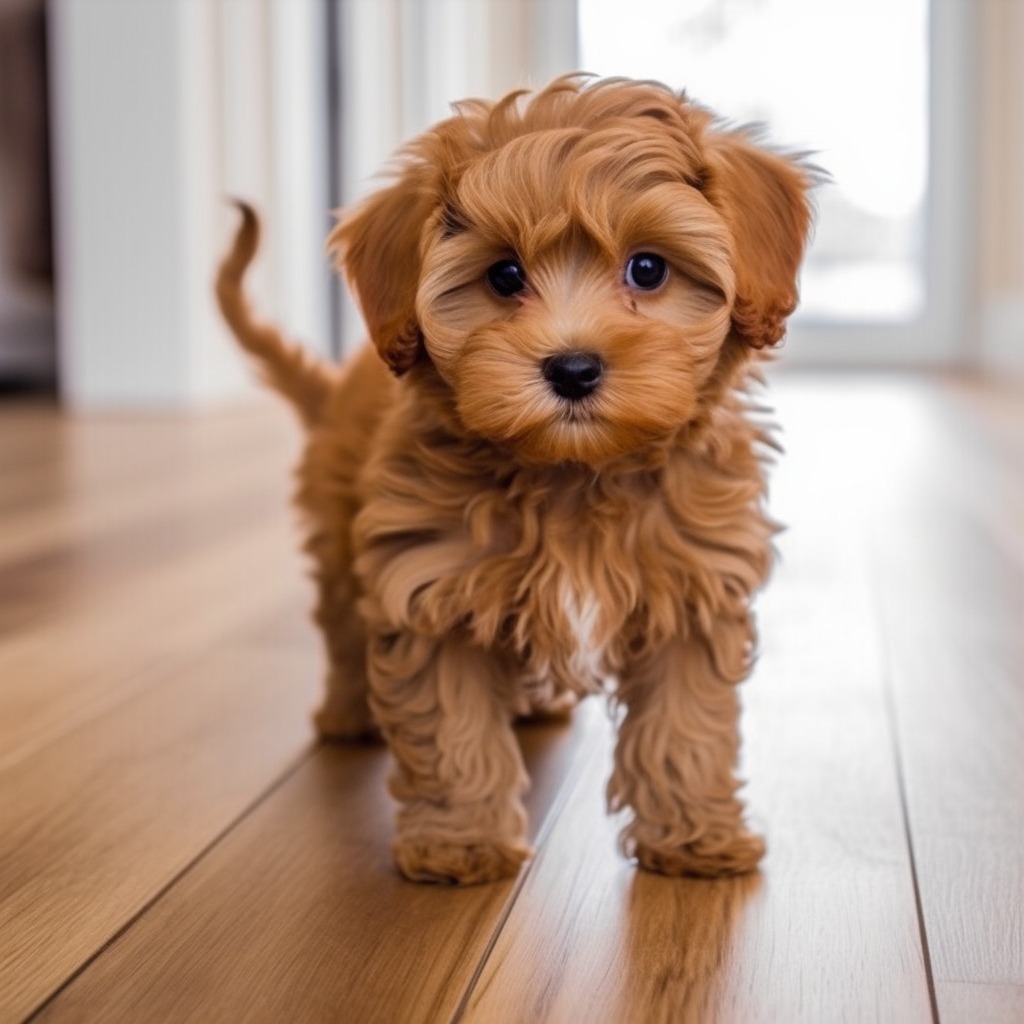 Remember, every Cavapoo is unique, and what works for one might not work for another. Patience, understanding, and consistency are your best allies in this journey. So, are you ready to embark on this incredible adventure of raising a Cavapoo puppy? Let's begin!
Remember, every Cavapoo is unique, and what works for one might not work for another. Patience, understanding, and consistency are your best allies in this journey. So, are you ready to embark on this incredible adventure of raising a Cavapoo puppy? Let's begin!
Table of Contents
Excessive Barking
Cavapoo puppies, like their counterparts, may develop a habit of barking excessively. This could be an outcome of various triggers such as anxiety, boredom, or a simple desire for attention. If not curtailed early, this could turn into a persisting issue, causing distress to you and your neighbors.
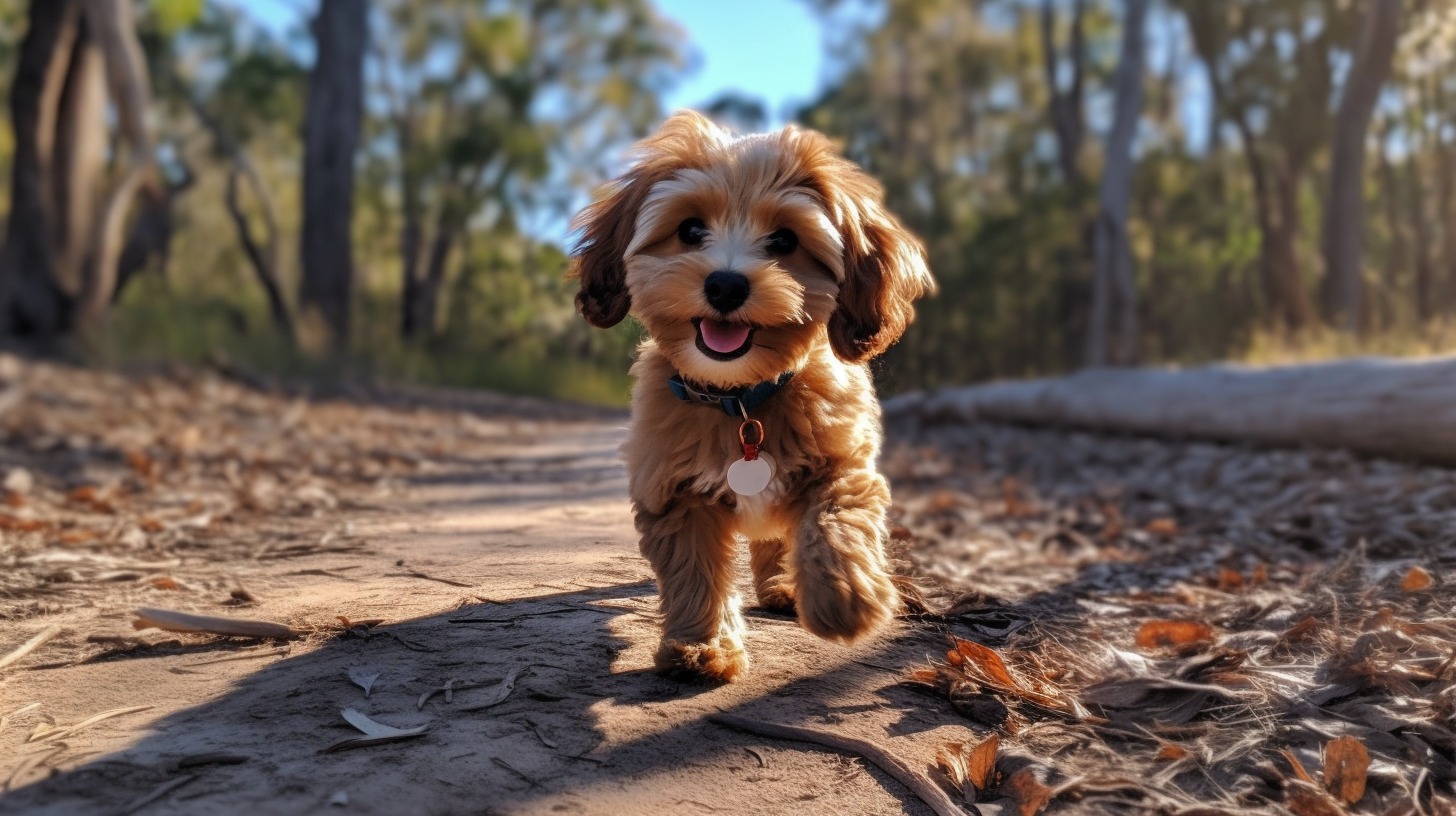 Solution: Engage your puppy with enough mental and physical activities throughout the day to prevent boredom. If your Cavapoo puppy barks excessively, avoid scolding or shouting as it might reinforce the behavior. Instead, turn a blind eye and reward your puppy when he/she is quiet, using treats and praise to reinforce positive behavior.
Solution: Engage your puppy with enough mental and physical activities throughout the day to prevent boredom. If your Cavapoo puppy barks excessively, avoid scolding or shouting as it might reinforce the behavior. Instead, turn a blind eye and reward your puppy when he/she is quiet, using treats and praise to reinforce positive behavior.
Chewing
Chewing is a common trait among Cavapoos, especially during their teething phase. They might chew on anything from your favorite pair of shoes to the corners of your couch. This is another Cavapoo puppy behavior that needs attention.
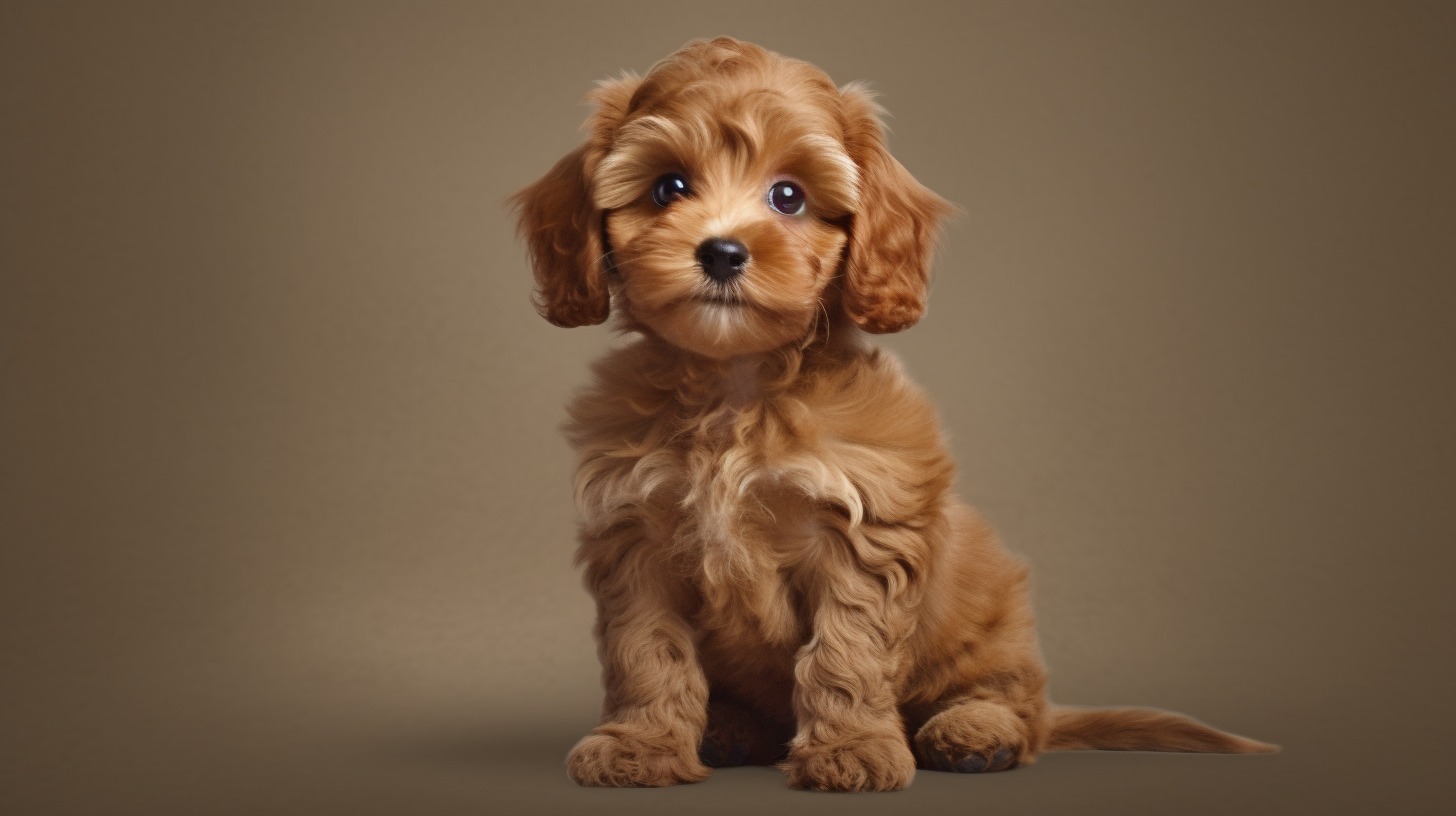 Solution: Ensure that your Cavapoo puppy has access to plenty of safe and appropriate chew toys. Use taste deterrents on objects you want to keep out of your puppy's reach. Always keep an eye on your puppy and redirect their attention to suitable items whenever you catch them chewing on something inappropriate.
Solution: Ensure that your Cavapoo puppy has access to plenty of safe and appropriate chew toys. Use taste deterrents on objects you want to keep out of your puppy's reach. Always keep an eye on your puppy and redirect their attention to suitable items whenever you catch them chewing on something inappropriate.
Jumping Up
It's hard to resist a Cavapoo puppy jumping up to greet you with their adorable face. However, as your puppy grows, this seemingly cute Cavapoo puppy behavior can become a problem.
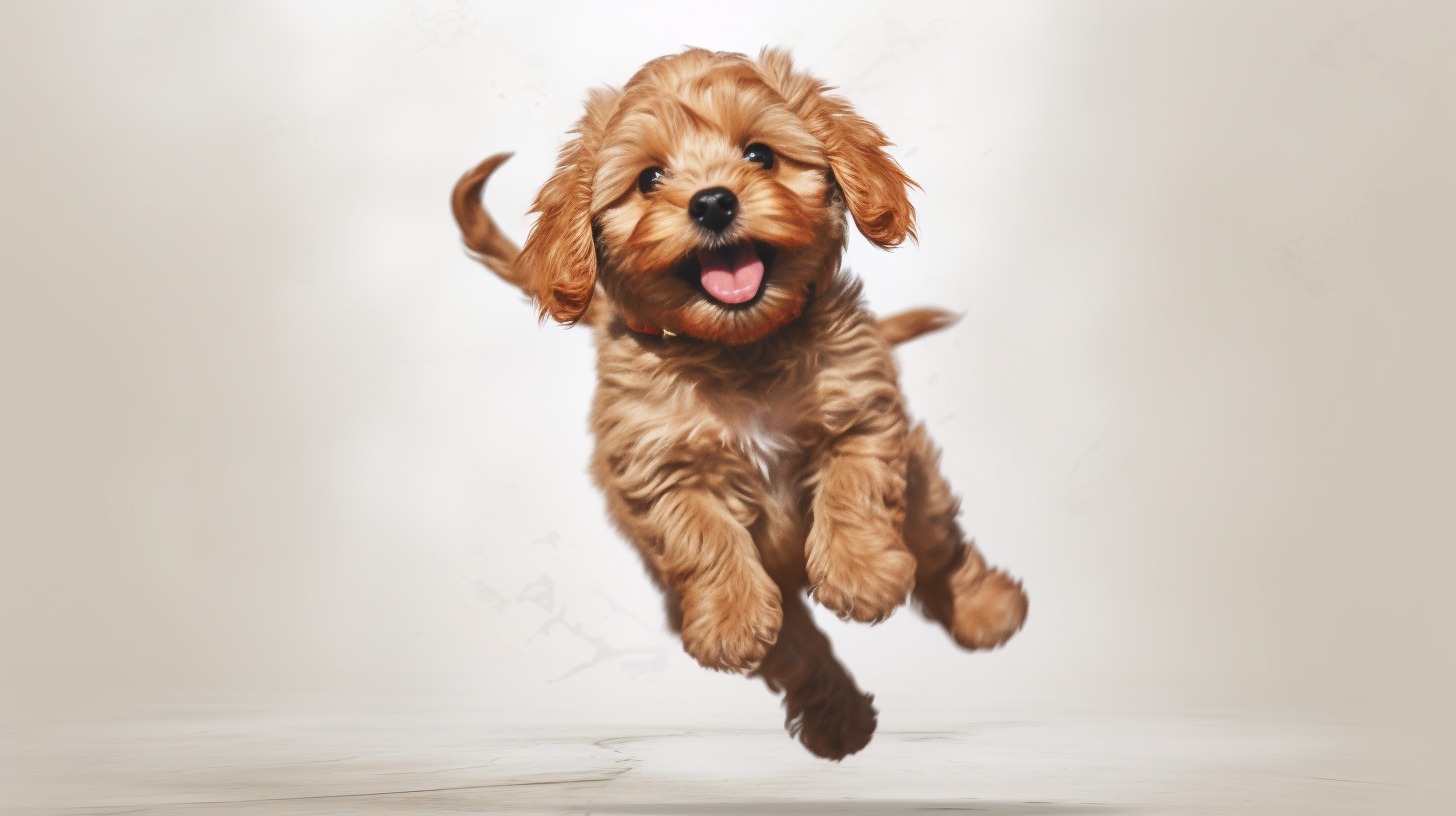 Solution: Avoid rewarding your puppy with attention when they jump up. Instead, wait until all four paws are on the ground and then lavish attention. Training your puppy to follow the "sit" command can serve as a valuable alternative behavior to jumping.
Solution: Avoid rewarding your puppy with attention when they jump up. Instead, wait until all four paws are on the ground and then lavish attention. Training your puppy to follow the "sit" command can serve as a valuable alternative behavior to jumping.
Pulling on Leash
Walks with your Cavapoo puppy can quickly turn into a tug-of-war if your puppy develops a habit of pulling on the leash. This is a common Cavapoo dog behavior that needs to be addressed.
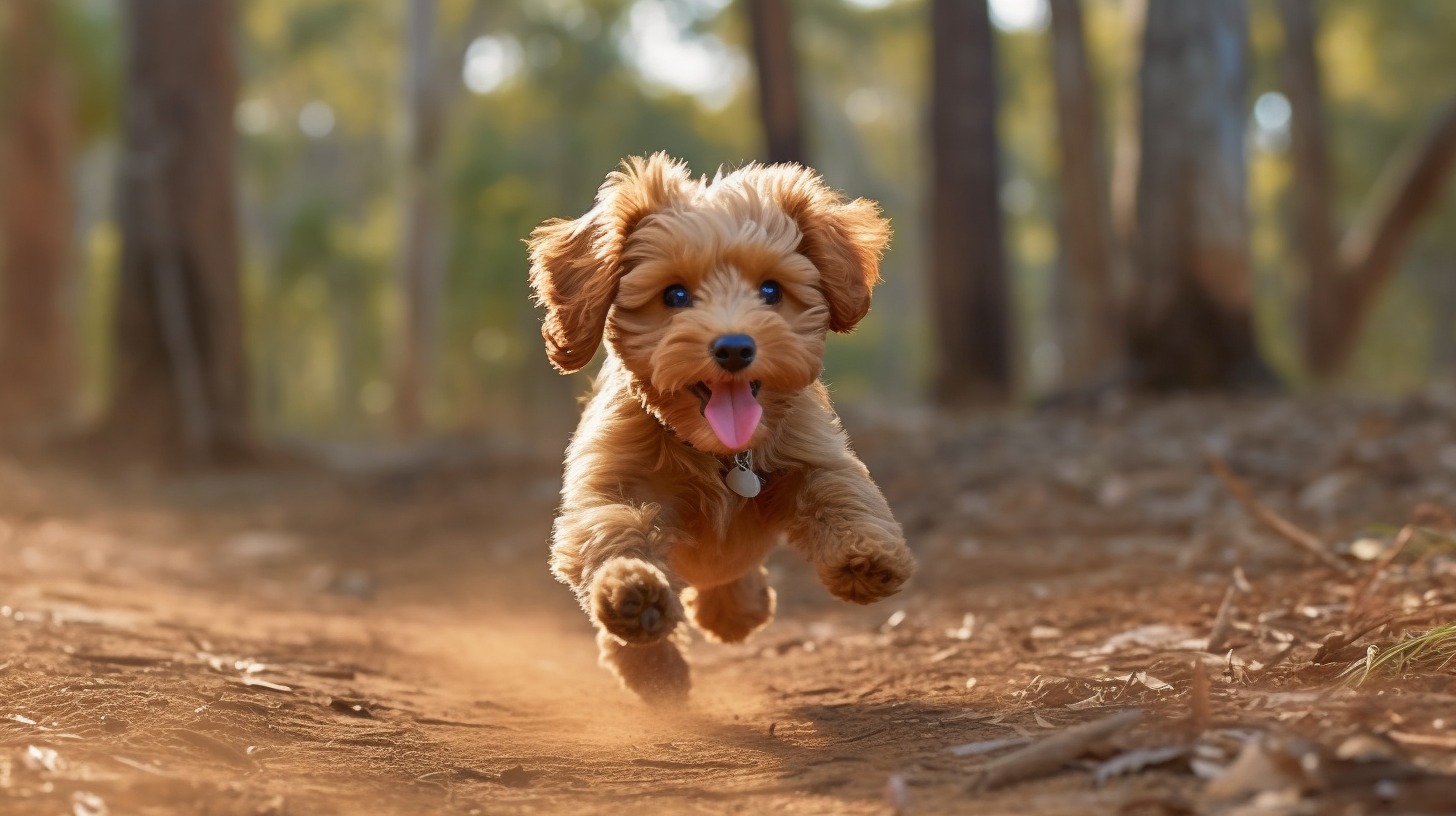 Solution: Start leash training early with a short leash. Reward your puppy for staying by your side during walks. If your puppy pulls, stop walking and resume only when the pulling ceases. This will teach your puppy that pulling gets them nowhere.
Solution: Start leash training early with a short leash. Reward your puppy for staying by your side during walks. If your puppy pulls, stop walking and resume only when the pulling ceases. This will teach your puppy that pulling gets them nowhere.
Not Coming When Called
A Cavapoo puppy that doesn't respond when called can pose a safety risk, especially in outdoor environments.
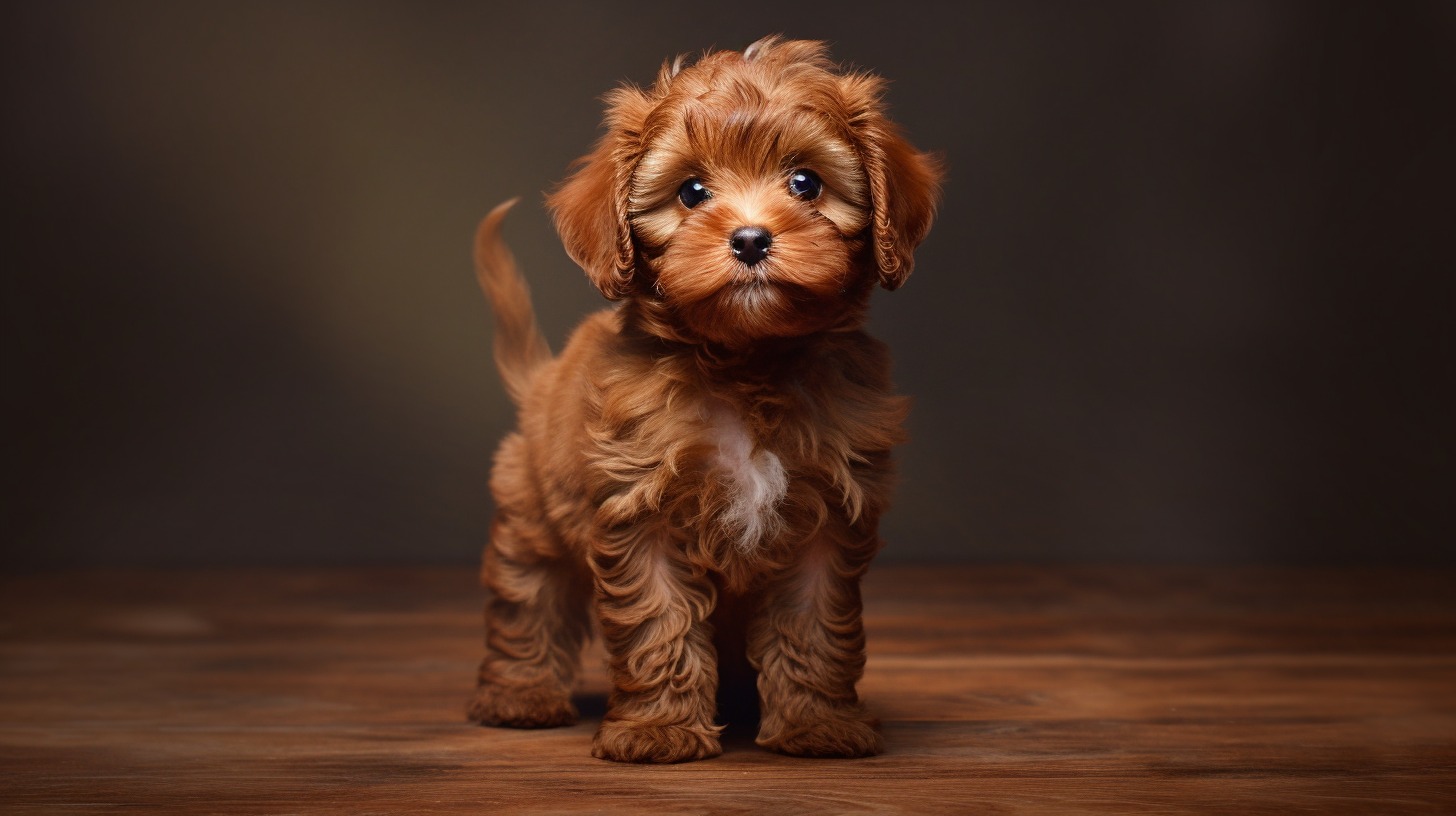 Solution: Begin training your puppy to respond to the "come" command in a quiet and distraction-free environment. Over time, introduce minor distractions and reward your puppy for obeying the command. This reinforcement will help your puppy associate the command with positive outcomes.
Solution: Begin training your puppy to respond to the "come" command in a quiet and distraction-free environment. Over time, introduce minor distractions and reward your puppy for obeying the command. This reinforcement will help your puppy associate the command with positive outcomes.
Food Aggression
Although not common in Cavapoos, food aggression can sometimes occur. This Cavapoo behavior is characterized by growling or snapping when someone approaches the puppy's food.
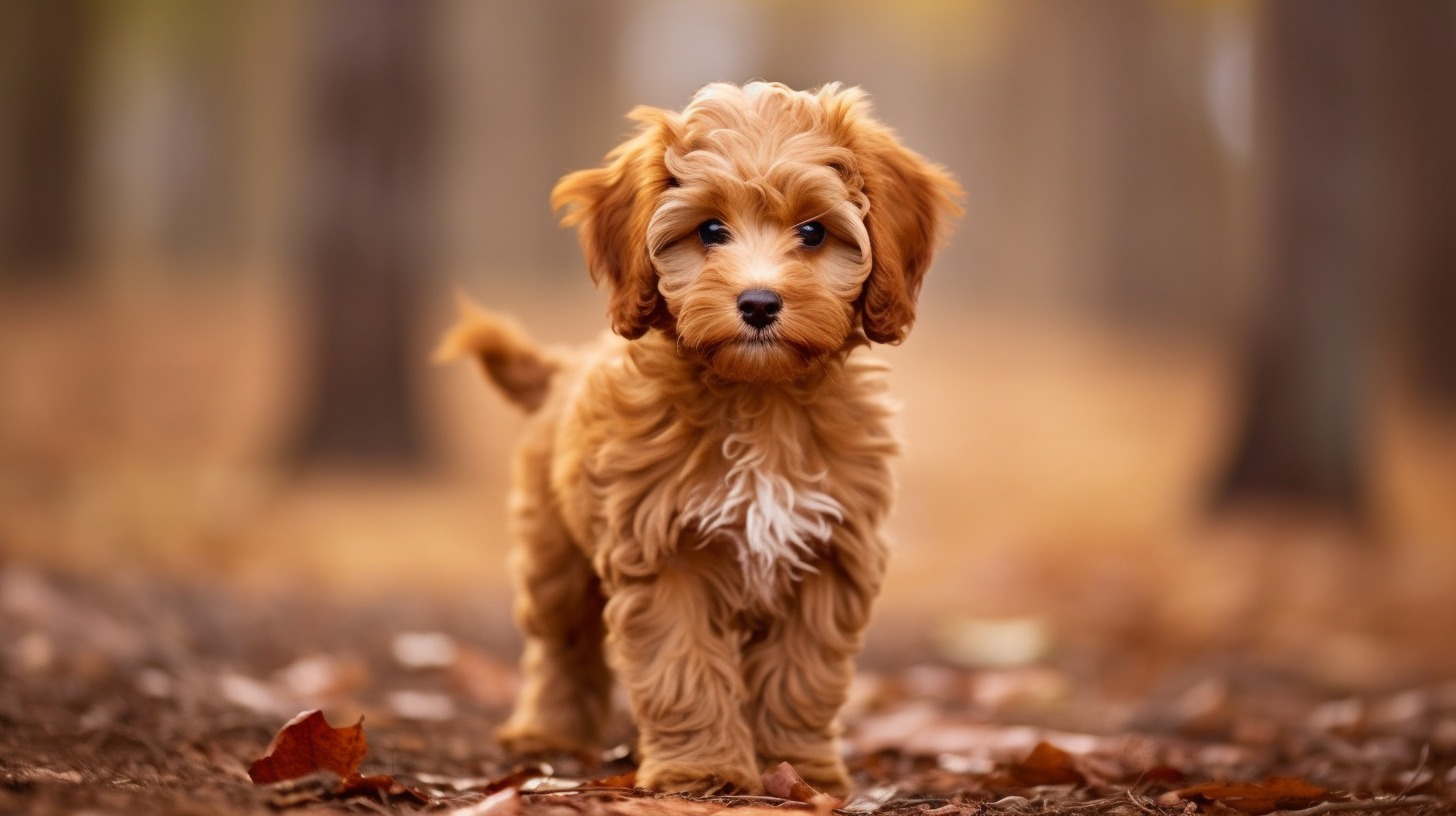 Solution: Try hand-feeding your puppy to make them understand that human hands near their food aren't a threat. You can also teach your puppy the "leave it" command, which can come in handy when you need to control your puppy's interaction with food.
Solution: Try hand-feeding your puppy to make them understand that human hands near their food aren't a threat. You can also teach your puppy the "leave it" command, which can come in handy when you need to control your puppy's interaction with food.
Separation Anxiety
Cavapoos are known for their sociable nature, and being left alone for long periods can cause them to develop separation anxiety. This is a common Cavapoo behavior that needs to be addressed.
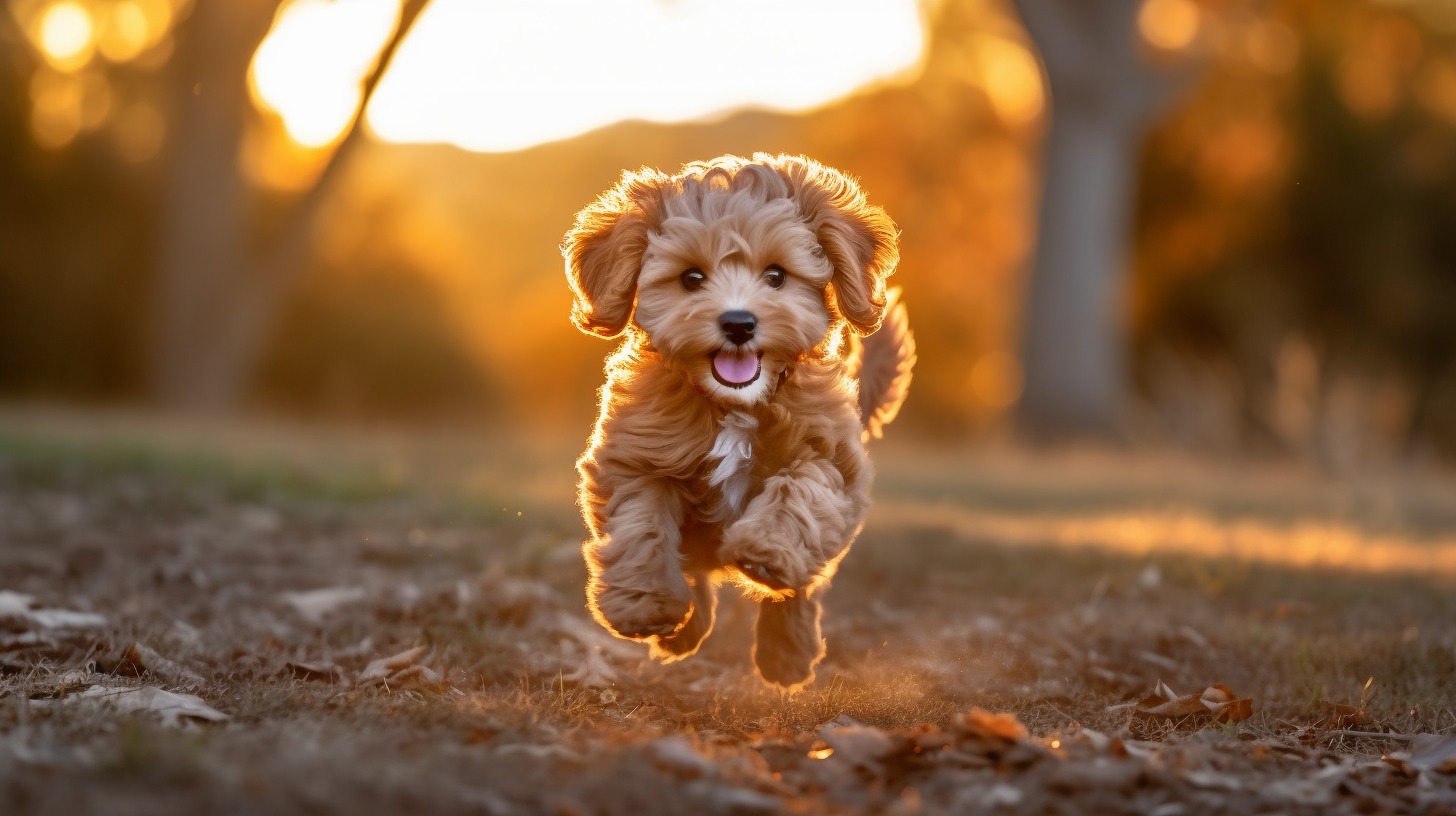 Solution: Gradually accustom your puppy to being alone. Start by leaving your puppy alone for short periods and slowly increase the duration. Providing stimulating toys to keep your puppy busy during your absence can also help.
Solution: Gradually accustom your puppy to being alone. Start by leaving your puppy alone for short periods and slowly increase the duration. Providing stimulating toys to keep your puppy busy during your absence can also help.
Toilet Training Issues
The toilet training process is often a challenge for new Cavapoo puppy owners. This is a critical aspect of your puppy's training as it directly affects the cleanliness of your home and the overall hygiene of your pet. If not managed properly, it can lead to undesirable habits and a stressful environment.
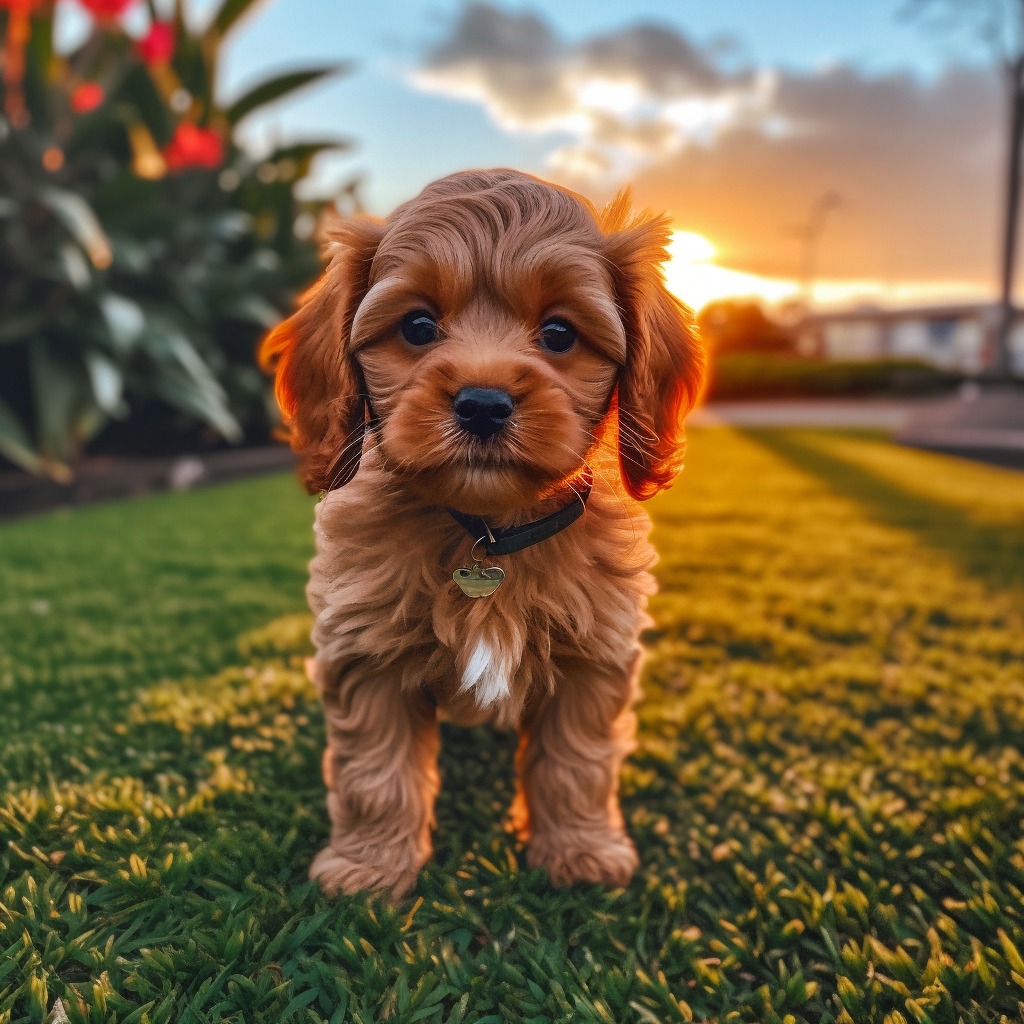 Solution: Establish and stick to a consistent feeding and toilet schedule. Reward your puppy for relieving itself in the correct place. This process requires patience, but with consistency, your puppy will eventually get the hang of it.
Solution: Establish and stick to a consistent feeding and toilet schedule. Reward your puppy for relieving itself in the correct place. This process requires patience, but with consistency, your puppy will eventually get the hang of it.
Conclusion
Training a Cavapoo puppy is no small feat. It requires understanding, patience, and unwavering consistency. However, the rewards of this challenging journey far outweigh the trials. By identifying and addressing these eight behaviors early, you pave the way for your puppy to mature into a well-behaved, disciplined, and delightful adult dog.
Remember, positive reinforcement is the key to successful training, encouraging desirable behaviors, and fostering a strong bond between you and your pet. Your efforts extend beyond just having a well-trained dog. You are laying the foundation for a lifetime of companionship, creating an environment where both you and your Cavapoo can thrive.
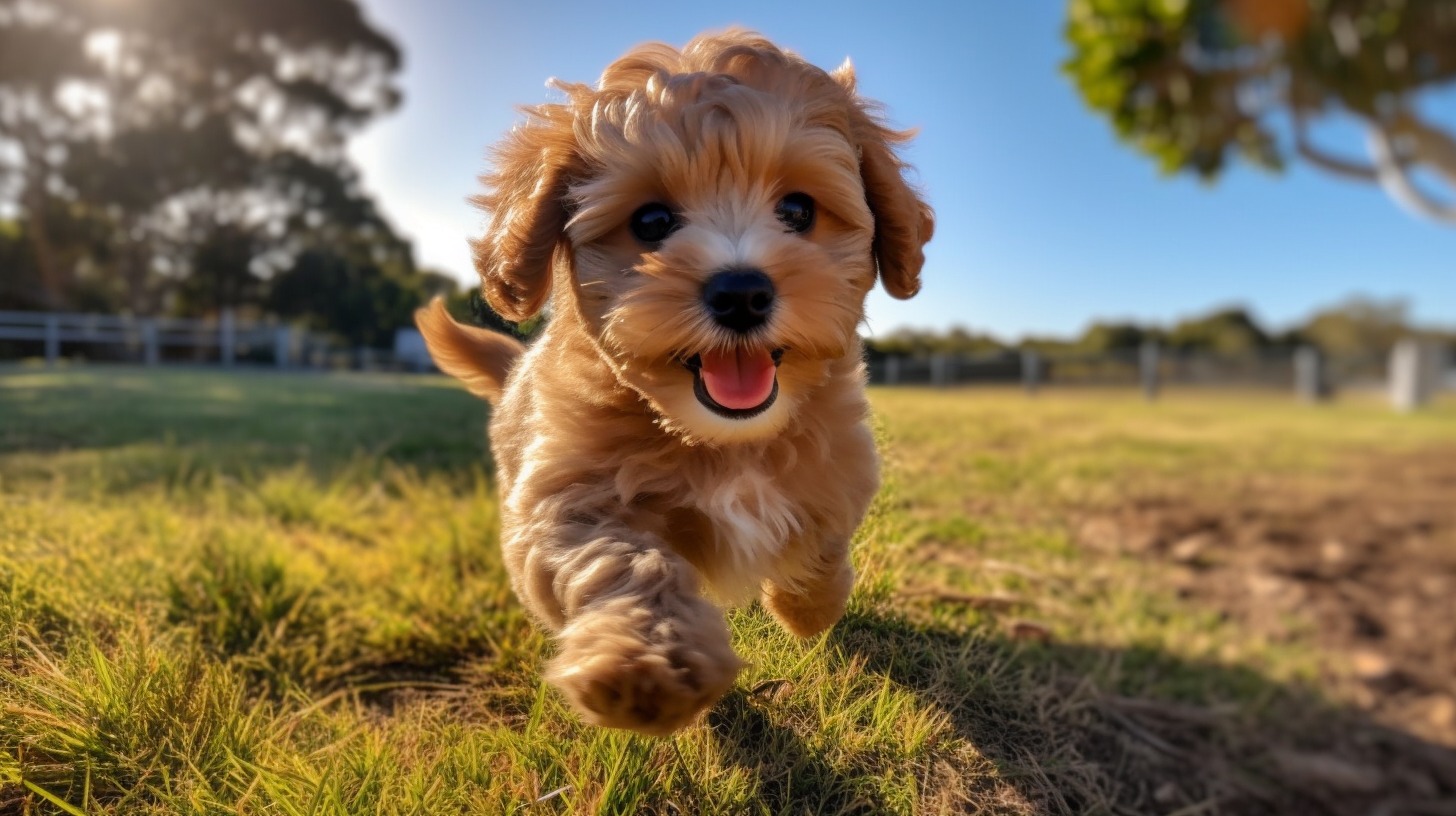 A well-trained Cavapoo is not only a delight to be around but also a testament to the bond between you two. All your efforts, the time spent training, and the patience will eventually culminate into a beautiful companionship, making every step of this journey well worth it!
A well-trained Cavapoo is not only a delight to be around but also a testament to the bond between you two. All your efforts, the time spent training, and the patience will eventually culminate into a beautiful companionship, making every step of this journey well worth it!
Scroll down to see FAQs about managing Cavapoo behaviors!
What To Read Next
How to Train a Puppy
15 Best Dog Breeds for First-Time Owners
Frequently Asked Questions
What is typical Cavapoo puppy behaviour? Cavapoo puppies are known for their playful and energetic behavior. They may bark excessively, chew on objects, jump up, pull on their leash, ignore calls, show food aggression, develop separation anxiety, and have toilet training issues.
How can I manage excessive barking in my Cavapoo? Engage your Cavapoo with enough mental and physical activities throughout the day to prevent boredom. Reward your puppy when they are quiet to reinforce positive behavior.
My Cavapoo chews on everything. What can I do? Provide your Cavapoo with plenty of safe and appropriate chew toys. Use taste deterrents on objects you want to keep out of your puppy's reach.
How can I stop my Cavapoo from jumping up? Avoid rewarding your puppy with attention when they jump up. Wait until all four paws are on the ground and then lavish attention. Training your puppy to follow the "sit" command can also help.
My Cavapoo pulls on the leash during walks. How can I address this? Start leash training early with a short leash. Reward your puppy for staying by your side during walks. If your puppy pulls, stop walking and resume only when the pulling ceases.
My Cavapoo doesn't come when called. What should I do? Begin training your puppy to respond to the "come" command in a quiet and distraction-free environment. Reward your puppy for obeying the command.
How can I manage food aggression in my Cavapoo? Try hand-feeding your puppy to make them understand that human hands near their food aren't a threat. You can also teach your puppy the "leave it" command.
My Cavapoo has separation anxiety. How can I help them? Gradually accustom your puppy to being alone. Start by leaving your puppy increase the duration. Providing stimulating toys to keep your puppy busy during your absence can also help.




